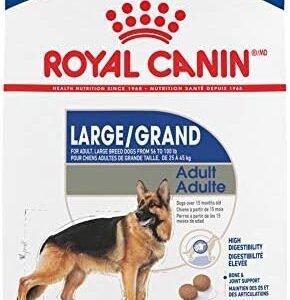In the realm of veterinary medicine, the search for effective treatments and medications to enhance the well-being of our beloved canine companions is an ongoing endeavor. One such medication that has been gaining attention and popularity in the veterinary world is Amantadine, available under various brand names including Symmetrel®, Gocovri®, Osmolex ER®, and Endantadine®. This comprehensive guide aims to shed light on the multifaceted role that Amantadine plays in the world of canine healthcare. We will explore its uses, dosages, potential side effects, and provide insights into the latest research surrounding this medication.
Table of Contents
Essential Information at a Glance
Before we delve into the details of Amantadine’s uses and benefits for dogs, let’sestablish a quick reference point with essential information presented in a structured table for easy access:
| Field | Information |
|---|---|
| Common Names | Symmetrel®, Gocovri®, Osmolex ER®, Endantadine® |
| Drug Type | Antiviral and Anti-Parkinson’s Medication |
| Used For | Pain Management, Canine Influenza, Canine Cognitive Dysfunction, and more |
| Administered | Tablets, Oral Liquid, Injectable, etc. |
| FDA Approved | Yes (for human use, but often used off-label in dogs) |
Understanding Amantadine (Symmetrel®, Gocovri®, Osmolex ER®, Endantadine®)
What is Amantadine (Symmetrel®, Gocovri®, Osmolex ER®, Endantadine®)?
Amantadine, the active ingredient in Symmetrel®, Gocovri®, Osmolex ER®, and Endantadine®, was originally developed for use in humans. It is known for its antiviral properties and has been utilized in the management of Parkinson’s disease. However, its versatility extends beyond these domains, as veterinarians have begun to explore its potential in the world of veterinary medicine.
In dogs, Amantadine is considered anoff-label medication, which means it is used in a manner not specified on the FDA-approved label. This off-label use is based on growing evidence of its potential therapeutic benefits in various canine health conditions.
How Does Amantadine (Symmetrel®, Gocovri®, Osmolex ER®, Endantadine®) Work in Dogs’ Bodies?
The exact mechanisms through which Amantadine exerts its effects in dogs are still under investigation, but its action is believed to involve modulation of neurotransmitters in the brain and nervous system. This modulation can have several effects, including the relief of pain and the management of certain neurological and behavioral conditions.

Common Conditions and Ailments in Dogs that Amantadine (Symmetrel®, Gocovri®, Osmolex ER®, Endantadine®) Can Treat or Manage
1. Pain Management
One of the primary applications of Amantadine in dogs is pain management. Chronic pain, often associated with conditions such as osteoarthritis, cancer, or orthopedic injuries, can significantly impact a dog’s quality of life. Amantadine’s ability to modulate neurotransmitters makes it a valuable tool in reducing pain perception, allowing dogs to lead more comfortable lives.
2. Canine Influenza
In recent years, as the threat of canine influenza has emerged, Amantadine has been explored as a treatment option. While it does not serve as a cure for the flu, it can aid in symptom management. This can be particularly beneficial in reducing the severity and duration of illness, helping affected dogs recover more swiftly.
3. Canine Cognitive Dysfunction
Similar to Alzheimer’s disease in humans, older dogs may experience cognitive decline, known as Canine Cognitive Dysfunction (CCD). Symptoms can include disorientation, changes in sleep patterns, and altered behavior. Amantadine’s potential role in enhancing cognitive function offers a ray of hope for aging dogs and their caregivers. However, it’s crucial to note that its effectiveness in addressing CCD may vary among individual dogs.
Benefits of Amantadine (Symmetrel®, Gocovri®, Osmolex ER®, Endantadine®) for Dogs
Effectiveness in Treating Specific Canine Health Issues
1. Pain Management
Amantadine’s potential as an effective pain management tool cannot be overstated. For dogs suffering from chronic pain associated with conditions like osteoarthritis, cancer, or orthopedic injuries, it can provide much-needed relief. By modulating neurotransmitters, Amantadine helps reduce the perception of pain, allowing dogs to move more comfortably and engage in their usual activities. This benefit is particularly significant for improving the quality of life in aging or ailing dogs.

2. Canine Influenza Symptom Management
While Amantadine doesn’t cure canine influenza, it plays a valuable role in managing the symptoms of this contagious respiratory illness. The flu can leave dogs feeling lethargic and unwell, and Amantadine helps alleviate these symptoms, potentially leading to a speedier recovery. This means less discomfort and a quicker return to their energetic selves.
3. Cognitive Function Enhancement
Aging dogs often face cognitive challenges, which can be distressing for both them and their caregivers. Amantadine offers a glimmer of hope in addressing Canine Cognitive Dysfunction (CCD). By enhancing cognitive function, it can help improve memory, awareness, and overall mental clarity in senior dogs. While the effectiveness may vary from one dog to another, the potential benefits for those struggling with CCD are significant.
How Amantadine (Symmetrel®, Gocovri®, Osmolex ER®, Endantadine®) Can Improve Dogs’ Quality of Life
1. Restored Mobility and Comfort
Chronic pain can be debilitating for dogs, limiting their mobility and making even the simplest activities painful. Amantadine’s ability to reduce pain perception can restore a dog’s mobility, allowing them to walk, run, and play with greater ease. This not only improves their physical health but also contributes to their overall happiness.
2. Faster Recovery from Canine Influenza
Canine influenza can leave dogs feeling miserable, with symptoms like coughing, sneezing, and fever. Amantadine’s role in managing these symptoms can lead to a quicker recovery, reducing the duration of discomfort and helping dogs return to their normal routines sooner.
3. Enhanced Cognitive Function in Seniors
For older dogs experiencing cognitive decline, life can become confusing and disorienting. Amantadine’s potential to enhance cognitive function offers a chance for these dogs to regain mental clarity, recognize their loved ones, and enjoy a more fulfilling senior life.
Incorporating Amantadine into a dog’s treatment plan should always be a decision made in consultation with a qualified veterinarian. While its benefits are substantial, it’s essential to assess each dog’s unique needs, consider any potential interactions with other medications, and monitor for side effects.
Administering Amantadine (Symmetrel®, Gocovri®, Osmolex ER®, Endantadine®) to Dogs
Dosage Guidelines
The appropriate dosage of Amantadine for your dog depends on several factors, including their size, weight, and the specific condition being treated. It is imperative to follow your veterinarian’s guidance regarding the correct dosage. Typically, the starting dose ranges from 3 to 5 milligrams per kilogram of the dog’s body weight, given once or twice daily.
For example, if you have a 20-kilogram dog, the initial dosage might be between 60 to 100 milligrams per day, split into one or two administrations. However, these dosages are general guidelines, and your veterinarian may adjust them based on your dog’s response to the medication.
Never attempt to determine the appropriate dosage for your dog without consulting a qualified veterinarian. Using the wrong dosage can lead to ineffective treatment or potential side effects.
Here’s a table with the general dosage of Amantadine for dogs based on their weight:
| Weight (lbs) | Dosage (mg) | Frequency |
|---|---|---|
| Up to 10 | 5-10 | Once or twice daily |
| 11-20 | 10-20 | Once or twice daily |
| 21-30 | 20-30 | Once or twice daily |
| 31-40 | 30-40 | Once or twice daily |
| 41-50 | 40-50 | Once or twice daily |
| 51-60 | 50-60 | Once or twice daily |
| 61-70 | 60-70 | Once or twice daily |
| 71-80 | 70-80 | Once or twice daily |
| 81-90 | 80-90 | Once or twice daily |
| 91-100 | 90-100 | Once or twice daily |
It’s important to follow your veterinarian’s guidance for your dog’s specific needs when administering Amantadine..
Frequency of Administration
Amantadine is typically administered once or twice daily, as prescribed by your veterinarian. The frequency depends on the specific condition being treated and your dog’s individual response to the medication. It’s essential to strictly adhere to the prescribed administration schedule to maintain a consistent level of the medication in your dog’s system.
Directions for Use
Administering medication to dogs can sometimes be challenging, especially if your pet is particular about what they consume. Here are some tips for effectively administering Amantadine to your dog:
- Hide in Treats: Many dogs are treat-motivated. You can hide the Amantadine tablet in a soft treat or a piece of cheese. Ensure that your dog consumes the entire treat to guarantee they receive the full dosage.
- Mix with Food: Some dogs are more receptive to medication when it’s mixed with their regular food. Consult your veterinarian to determine if this is a suitable option for your dog, as some formulations of Amantadine may not be suitable for mixing with food.
- Pill Pockets: Pill pockets are commercially available treats designed to conceal medication. They often come in various flavors, making it easier to entice your dog to take the medication.
- Ask Your Vet About Liquid Formulations: In some cases, liquid formulations of Amantadine may be available, which can be administered using a syringe or mixed with food.

Importance of Adhering to Prescribed Dosages
Adhering to the prescribed dosages is crucial for two main reasons:
- Effectiveness: Using the correct dosage ensures that Amantadine is effective in managing your dog’s condition. Under-dosing may lead to inadequate relief of symptoms, while over-dosing can result in potential side effects.
- Safety: Prescribed dosages are determined with your dog’s safety in mind. Deviating from these guidelines can pose risks to your dog’s health. It’s important to remember that Amantadine is generally considered safe when used as directed by a veterinarian.
Handling Missed Doses
If you inadvertently miss a dose of Amantadine, it’s essential not to double the next dose to make up for it. Instead, administer the missed dose as soon as you remember, and then resume the regular dosing schedule. However, if it’s close to the time for the next scheduled dose, skip the missed one and continue with the next as usual.
Consistency in administering Amantadine is key to maintaining a steady level of the medication in your dog’s system, optimizing its effectiveness.
Potential Side Effects and Precautions
Common Side Effects of Amantadine in Dogs
Amantadine is generally considered safe for dogs when used as directed by a qualified veterinarian. However, like any medication, it can potentially cause side effects. Common side effects include:
- Gastrointestinal Upset: Some dogs may experience mild gastrointestinal issues, such as nausea, vomiting, or diarrhea, especially when they first start taking Amantadine. These symptoms are typically temporary and often subside as your dog’s body adjusts to the medication.
- Restlessness or Excitement: In some cases, dogs may exhibit increased activity or restlessness when taking Amantadine. This heightened state of alertness is usually not a cause for concern and tends to diminish over time.
- Dry Mouth: Amantadine can lead to dry mouth (xerostomia) in certain dogs, resulting in increased thirst. Ensure your dog has access to fresh water to alleviate this symptom.
It’s important to note that not all dogs will experience these side effects, and many tolerate Amantadine well. However, if you notice any of these symptoms persisting or becoming severe, it’s crucial to contact your veterinarian promptly. They can provide guidance on whether any adjustments to the medication or treatment plan are necessary.
Identifying Severe or Adverse Reactions
While rare, severe or adverse reactions to Amantadine can occur. These reactions may include:
- Allergic Reactions: Signs of an allergic reaction may include hives, difficulty breathing, swelling of the face, lips, tongue, or throat. If you observe any of these symptoms, seek immediate veterinary attention.
- Seizures: In extremely rare cases, Amantadine may trigger seizures in susceptible dogs. If your dog experiences a seizure, contact your veterinarian immediately.
- Behavioral Changes: Although restlessness or excitement is a common side effect, severe or unusual changes in behavior, such as aggression or extreme lethargy, should be reported to your veterinarian.
It’s essential to closely monitor your dog when they first start taking Amantadine and throughout the treatment period. If you notice any concerning or unexpected changes in their health or behavior, consult your veterinarian promptly. Early intervention can be critical in addressing adverse reactions.
Precautions for Pregnant or Lactating Dogs
If you have a pregnant or lactating dog, it’s crucial to exercise caution when considering Amantadine. While the medication has been used in pregnant dogs without apparent harm to the offspring, it should only be administered if the potential benefits outweigh the risks. Always consult with your veterinarian to make an informed decision regarding medication during pregnancy or lactation.
Interactions with Other Medications or Supplements
Amantadine has the potential to interact with other medications or supplements your dog may be taking. It’s essential to provide your veterinarian with a comprehensive list of all the medications, supplements, and treatments your dog is receiving. This information will help your veterinarian make informed decisions about the safety and effectiveness of Amantadine in conjunction with other substances.
In conclusion, while Amantadine (Symmetrel®, Gocovri®, Osmolex ER®, Endantadine®) can offer significant benefits for dogs, it is essential to be aware of potential side effects, monitor your dog’s response to the medication, and take precautions when necessary. The guidance and supervision of a qualified veterinarian are paramount to ensure the safety and well-being of your furry companion.
Consultation with a Veterinarian
Emphasizing the Importance of Professional Guidance
Amantadine, like any medication, should only be administered to dogs under the supervision and guidance of a licensed veterinarian. Your veterinarian possesses the knowledge and expertise to assess your dog’s specific condition, recommend the appropriate dosage, monitor your dog’s response to the medication, and make necessary adjustments to the treatment plan.
When seeking professional guidance, it’s essential to provide your veterinarian with a comprehensive medical history of your dog, including any preexisting health conditions, allergies, or medications your dog may be taking. This information allows your veterinarian to make informed decisions about the use of Amantadine and its potential interactions with other treatments.
Overdose Information and Possible Toxicity/Effect
Administering the correct dosage of Amantadine is crucial to your dog’s safety. Overdosing can lead to adverse effects and may be toxic. Therefore, it’s essential to follow your veterinarian’s instructions precisely and avoid giving your dog more medication than prescribed.
If you suspect that your dog has ingested an excessive amount of Amantadine, contact your veterinarian immediately or seek emergency veterinary care. Symptoms of overdose may include severe restlessness, agitation, tremors, seizures, or other unusual behaviors. Prompt veterinary attention
Comparison with Similar Drugs in this Category
As we delve into the world of canine healthcare and the use of Amantadine (Symmetrel®, Gocovri®, Osmolex ER®, Endantadine®), it’s essential to consider how this medication compares to other drugs in its category. Understanding the similarities and differences between Amantadine and its alternatives can help you make informed decisions about your dog’s treatment. In this section, we will compare the efficacy of drugs, discuss when each alternative is chosen, and consider the cost of these medications.
Comparing Efficacy of Drugs
When it comes to managing pain, addressing canine influenza, or dealing with cognitive dysfunction in dogs, veterinarians have several options at their disposal. Amantadine is just one of these choices. Let’s take a closer look at how it compares in terms of efficacy with some other drugs commonly used in veterinary medicine:
Non-Steroidal Anti-Inflammatory Drugs (NSAIDs)
NSAIDs are a class of medications often prescribed to manage pain and inflammation in dogs. They are commonly used for conditions like osteoarthritis and post-surgical pain. While NSAIDs can be highly effective, they may not be suitable for all dogs, especially those with underlying gastrointestinal issues or a history of adverse reactions
Frequently Asked Questions (FAQs)
Q1: What is Amantadine, and is it safe for dogs?
A1: Amantadine is a medication primarily developed for use in humans as an antiviral and anti-Parkinson’s drug. While it’s not FDA-approved for dogs, veterinarians sometimes use it off-label to manage certain canine conditions. When used as directed by a qualified veterinarian, Amantadine is generally considered safe for dogs.
Q2: What are the common uses of Amantadine in dogs?
A2: Amantadine is often prescribed for pain management in dogs, especially for chronic conditions like osteoarthritis and cancer-related pain. It’s also explored as a treatment option for canine influenza and canine cognitive dysfunction, a condition similar to Alzheimer’s disease in humans.
Q3: How is Amantadine administered to dogs?
A3: Amantadine is typically administered orally in tablet or capsule form. The dosage may vary depending on your dog’s size, weight, and the specific condition being treated. Always follow your veterinarian’s instructions regarding dosage and administration.
Q4: What are the potential side effects of Amantadine in dogs?
A4: While Amantadine is generally well-tolerated, some dogs may experience mild and temporary side effects. These can include gastrointestinal upset (nausea, vomiting, diarrhea), restlessness or increased activity, and dry mouth leading to increased thirst.
Q5: Can Amantadine be used in combination with other medications?
A5: Amantadine can be used alongside other medications, but it’s essential to inform your veterinarian of all the medications, supplements, or treatments your dog is receiving. This information helps your vet make informed decisions about potential interactions.
Q6: How long does it take for Amantadine to work in dogs?
A6: The time it takes for Amantadine to show noticeable effects can vary depending on the condition being treated and the individual dog’s response. In some cases, improvements may be seen within a few days, while in others, it may take several weeks.
Q7: Can I give my dog Amantadine without consulting a veterinarian?
A7: No, it’s essential to consult with a qualified veterinarian before starting any new medications or treatments for your dog, including Amantadine. Your veterinarian will assess your dog’s specific needs, provide the correct dosage, and monitor their progress.
Q8: What should I do if my dog misses a dose of Amantadine?
A8: If your dog misses a dose, administer it as soon as you remember. However, if it’s close to the next scheduled dose, skip the missed one and continue with the regular dosing schedule. Do not double the dose to make up for the missed one.
Q9: Can I discontinue Amantadine if my dog’s condition improves?
A9: It’s essential to follow your veterinarian’s guidance regarding the duration of Amantadine treatment. Stopping the medication abruptly, especially for chronic conditions, can lead to a recurrence of symptoms. Always consult with your vet before discontinuing any prescribed medication.
Q10: Are there any long-term effects of using Amantadine in dogs?
A10: The long-term effects of Amantadine use in dogs can vary depending on the specific condition and how well your dog responds to the medication. Regular check-ups with your veterinarian are crucial to assess your dog’s progress and make any necessary adjustments to the treatment
References and Additional Resources
In this section, we provide links to reputable veterinary associations and websites where you can find more information about Amantadine (Symmetrel®, Gocovri®, Osmolex ER®, Endantadine®) for dogs. Additionally, we encourage you to reach out to veterinary professionals for any specific questions or concerns about your dog’s health and treatment.
1. American Veterinary Medical Association (AVMA)
The AVMA is a trusted resource for pet owners, offering a wealth of information on various veterinary topics, including medications like Amantadine. You can find articles, guidelines, and resources related to pet health and medications on their website.
2. American Animal Hospital Association (AAHA)
AAHA is another respected organization dedicated to promoting excellence in veterinary care. Their website provides valuable insights into pet healthcare and medication usage. You can explore their resources to learn more about medications like Amantadine.
Contact Information for Veterinary Professionals:
For personalized guidance and to address your specific concerns about Amantadine or any other aspect of your dog’s health, it’s best to reach out to your local veterinary clinic or a qualified veterinarian. They can provide expert advice tailored to your dog’s unique needs.

Dr. Rachel Davis is a passionate veterinarian, having completed her studies in veterinary medicine at the University of California. Alongside her professional commitments, she remains dedicated to her beloved dog and has a profound love for all animals. In her spare time, she indulges in her passion for writing, often focusing on topics related to veterinary care and animal welfare.
























